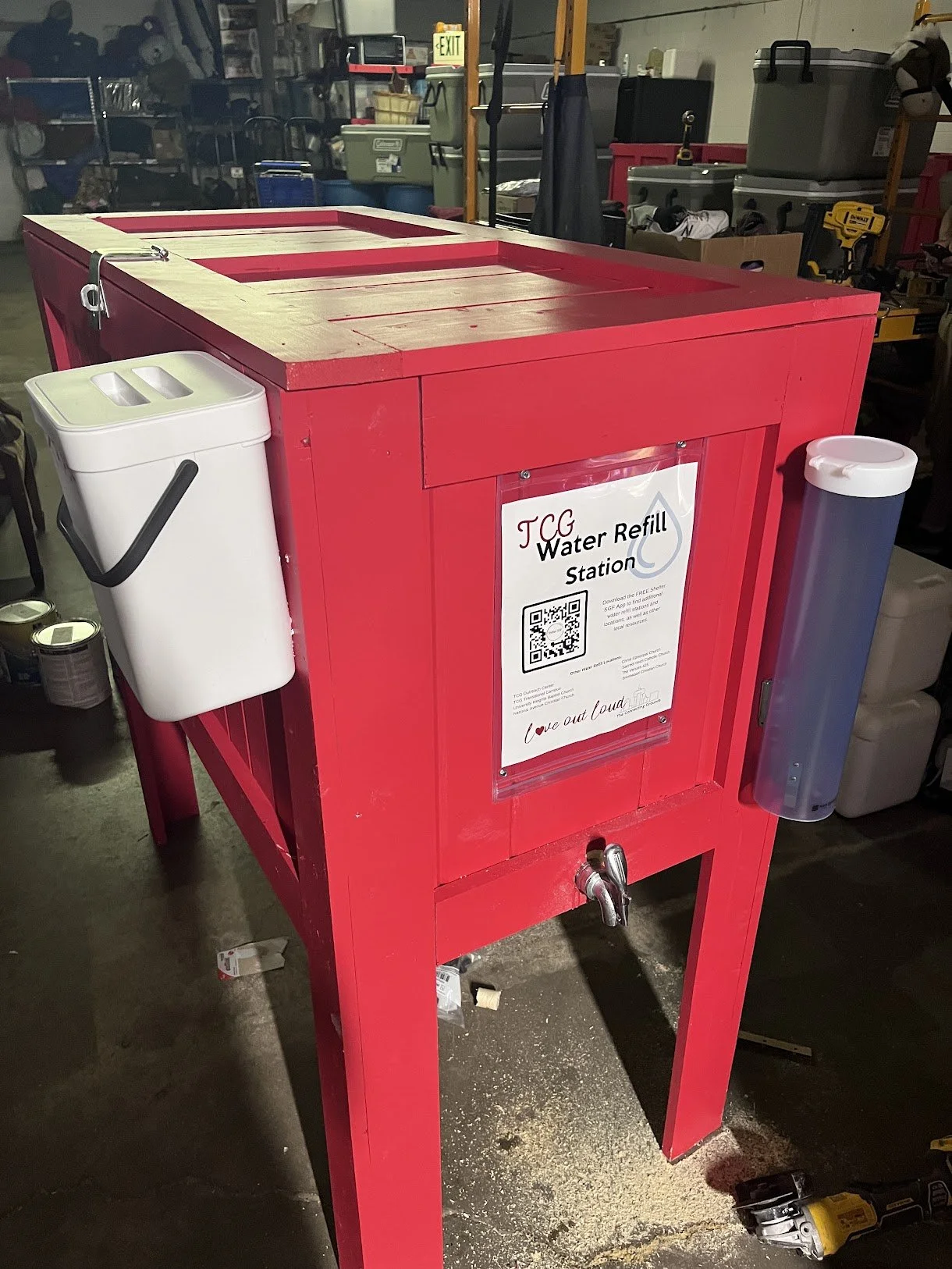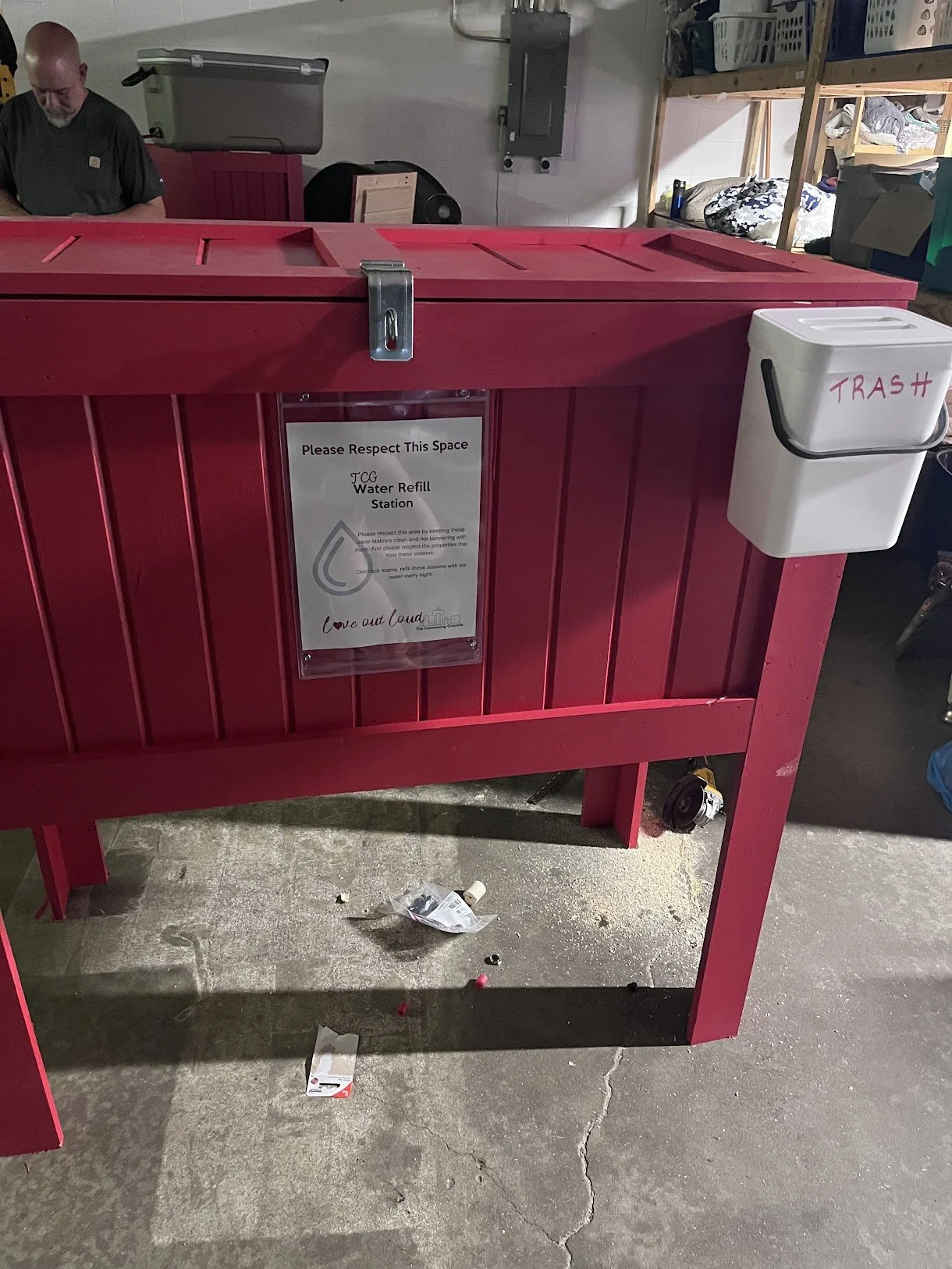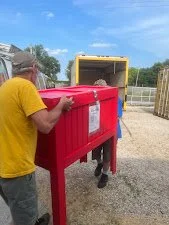Building Water Stations for Your Community
As the number of unsheltered individuals continues to rise in our nation, one of the greatest (and often overlooked) needs of these individuals is access to safe, clean drinking water. This is especially true in the hot summer months as dehydration can cause many health concerns and complications for those struggling to survive without stable shelter.
In the summer of 2023, Flipped Table Co-Founder Christie Love’s husband, Bob Love, created a design to build water refill stations through their church plant that could be placed around the community so that unsheltered neighbors could get drinks or refill their water bottles as needed. Here are a few of the news stories about this effort:
https://www.ozarksfirst.com/news/water-stations-made-to-help-unsheltered-in-summer-heat/
Here are some photos of the water stations that they built and placed around their community.
Each water station costs up to $550 (cost will vary on materials at the time) to build and requires a team of volunteers to maintain, but this is a lifesaving outreach project that churches can do to provide desperately needed drinking water sources to their neighbors. Below are detailed instructions on how to build a water station, the list of parts that you will need (with links to shop for them on Amazon), and tips on maintaining your water station throughout the summer.
If you are interested in building one of these units and have questions, please get in touch with us at support@flippedtablecollective.com. Also, if you build one in your community, tell us about it and send us a picture!
Links to Materials Needed Build a Water Station on Amazon
1 set of metal handles for the lid
1 Hasp to lock the lid so that no one can tamper with the water.
1 package of PEX 90-degree elbows
1 package of 1/2” PEX crimp rings (10 needed)
1 36” long stainless steel hinge
1 package of PEX water shut-off valves.
Other materials needed (not listed on Amazon)
3 -2x4x8
10- 1x4x8
1 sheet of 3/4” AC Plywood
1 pc of 3/4” plywood (23” x 38”)
Lock and Key set for the closure
Links to Materials Needed Maintain a Water Station on Amazon
1- Hanging Trash Can to mount on the side
Paper cups to place in the cup dispenser
Ice to keep the water cold. (We filled plastic coffee containers with water and froze them and then dropped 2-3 frozen cans into the cooler every day. This allowed them to melt down and be changed out each time we changed the water.)
Gloves to clean out the trash cans
Tips on Maintaining the Water Stations and Keeping them Safe and Clean
Be sure to test the water daily to ensure it is safe to drink. If numbers are off, close and drain the station and disinfect before refilling with clean water.
Fully drain each station every 7-10 days to disinfect the cooler. We would drain the water, use a hand-held shop vac to clean out any debris and wipe clean with disinfectant wipes. We then would rinse out the cooler before refilling.
Skim any leaves or debris out of the water daily.
Keep the water station locked at all times to ensure the safety of the water.
Empty the trash daily and check for any cups or trash around the water station that needs to be cleaned up.
Consider putting a sign on the front of the water station explaining what it is, why you are offering it to the community, and how to access the water.
We gave out refillable water bottles to our unsheltered neighbors to cut down on the number of paper cups that were used.
Trauma Training Takeaway: Understanding the barriers to health and stability and then being willing to put practical steps in place to help eliminate those barriers is the embodiment of trauma-informed outreach. We encourage you to find ways to make those who use your water station feel welcomed on your property and valued in their humanity. If you see someone filling their water bottle or cup: say hello, ask them their name, introduce yourself, and tell them that they are always welcome. If you have time and they are willing, engage in conversation to build trust and lay the foundation for future conversations and relationships.
Also, keep in mind that those who use your water station may be dealing with mental health issues and sobriety struggles and may not be in the mood to talk- especially if they are hot, exhausted, or uncomfortable. We encourage you to watch our content cast video on De-Escalation so that you are prepared for any situations that may arise.








